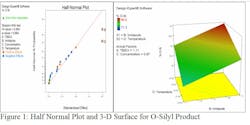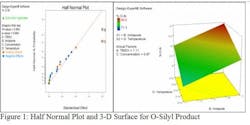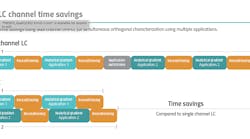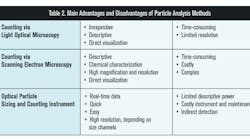Design of Experiments Helps Increase Yield of Pharmaceutical Intermediate from 70% to 88%
Researchers at Codexis Laboratories Singapore performed a full-factorial designed experiment with 20 runs to determine the impact of four independent variables on product selectivity during a silylation reaction. The experiment revealed that the optimal combination of factors increased the selectivity of the reaction to 97% for silylation on oxygen with less than 2% each for the undesirable alternatives. Codexis researchers adjusted the factors to increase the concentration for improved throughput, resulting in a process that delivered 95% selectivity along with an 88% yield.
A joint research program between Codexis and a leading pharmaceutical manufacturer addressed the production of an O-silylazetidinone, a key intermediate for the synthesis of many beta-lactam antibiotics including ertapenem, meropenem and doripenem, through the silyation of a hydroxyazetidinone. The output of the original process consisted of 70% the desired product where the silyl group is on oxygen. The output also included 11% of an isometric byproduct where the silyl group is on nitrogen and 17% of a third option where the silyl group is on both oxygen and nitrogen (i.e. bis-silylation). Codexis develops and commercializes processes to active pharmaceutical ingredients (APIs) and pharmaceutical intermediates using its proprietary biocatalytic processes. The overwhelming majority of APIs have at least one chiral center. Increased regulatory requirements for improved product purity have led to growing demand for stereochemically pure intermediates. Using proprietary biocatalysts, Codexis manufactures virtually 100% chirally pure intermediates and APIs. These are often manufactured directly at high purity, compared to low purity materials that must be isolated after being produced by traditional chemical processes.Codexis has developed an efficient and selective process for dynamic ketone reduction of a ketotester to produce a diastereomeric hydroxyketone. Conversion of the diastereomeric alcohol into the O-silylazetidinone requires additional challenging steps including the silyation of the hydroxyazetidinone. The previous pilot plant process involved treatment of a slurry of hydroxyazetidione in toluene at 25-30oC with imidazole and then feeding in a solution of tert-butyldimethylsilyl chloride (TBSCI) in toluene. After workup and crystallization, this provided the desired product in yields of about 70%. A team of Codexis researchers including Steve Collier and Rob Wilson, set about scaling down the current process in the laboratory, addressing the selectivity and yield issues and transferring the process back to the pilot plant in as short a time as possible. The conventional approach to optimizing the factors would have been to run a series of experiments while varying a single factor, sometimes called the one-factor-at-a-time (OFAT) approach. The problem with this approach is that it does not detect interactions between factors or second order effects.Researchers decided to use the design of experiments (DOE) method because it varies the values of all variables in parallel so it uncovers not just the main effects of each variable but also the interactions between the variables. This approach makes it possible to identify the optimal values for all variables in combination. It also requires far fewer experimental runs than the OFAT approach. “Design of experiments enables chemists to efficiently define, better understand and optimize factors that are important to reaction yield and robustness, particularly where multiple parameter interactions occur,” Collier, who is Director of R&D for Codexis Laboratories Singapore, said.The Codexis team uses Design-Expert® software from Stat-Ease, Inc., Minneapolis, Minnesota, to design and analyze DOE experiments. “Design-Expert walks users through the entire process so it enables scientists and engineers to develop their own experiments without requiring assistance from statisticians,” Collier said. “I am an advocate of DOE and a fan of Stat-Ease so I brought one of their instructors in to give my team a course in DOE. It was very well received and we have since utilized Design-Expert to help improve a series of important pharmaceutical processes.”The Codexis team selected four factors in the O-silylazetidinone process for their potential to have a significant impact on the process: equivalents of TBSCI, equivalents of base, reaction concentration and reaction temperature. The team developed a two-level factorial DOE study with 20 runs including four runs at the existing conditions in order to evaluate the robustness of the experimental data. Three responses were studied including the yield of the desired O-silyl compound, yield of the undesired N-silyl compound and yield of the undesired N,O-bis silyl compound after completion of the reaction.The experiments were centered around the existing conditions which were 1.1 equiv TBSCI, 1.2 equiv imidazole, 0.868 N concentration and 30oC temperature. The additional runs were designed using small changes in either direction from the existing conditions. The results of each run were quantitatively analyzed using high performance liquid chromatography (HPLC). The HPLC data was analyzed using Design-Expert and models were built to determine the impact.









